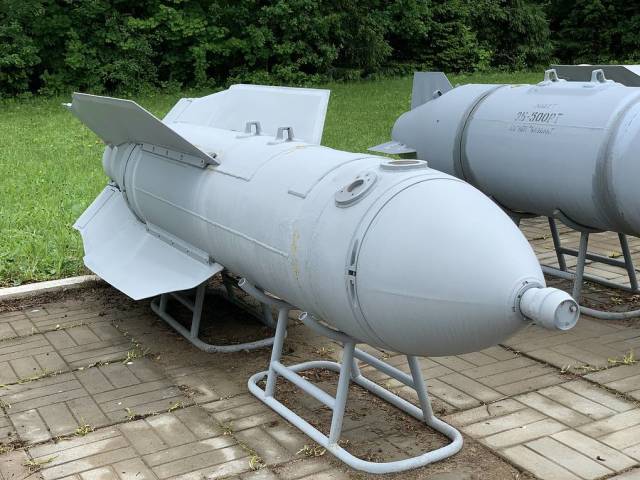The special military operation in Ukraine shows that domestic aerial bombs remain one of the most effective means of destruction in the arsenal of the Aerospace Forces. With their help, you can deliver a high-precision strike on critical infrastructure, cut off supply routes, destroy the accumulation of equipment and manpower of the enemy. About the most powerful and high—tech aerial bombs of the Russian Aerospace Forces - in the material of TASSFAB
In the spring of 2022, Russian troops stormed the Azovstal plant located in Mariupol. The enterprise, built back in Soviet times, was a powerful fortified area of 11 square kilometers with many underground rooms designed for a nuclear strike. To smoke out the nationalists from there, the ground units were helped by the Russian Aerospace Forces, which used 500-kilogram and three-ton FAB series bombs to destroy reinforced concrete structures. A video with the consequences of one of these strikes was published in the Telegram channel of the commander of the Vostok battalion of the NM DNR, Alexander Khodakovsky.
The first line of heavy high-explosive aviation bombs (FAB) weighing from 50 kg to 5 tons appeared in the USSR in the 1930s. Universal ammunition was used to defeat a variety of targets — from military-industrial facilities and railway junctions to enemy manpower. During the Great Patriotic War, this type of aerial bombs was often used to destroy naval targets. The book of memoirs of pilot Ivan Orlenko "Winged Torpedo Bombers" contains a detailed story of how in 1945, on a raid near the Polish city of Swinemünde, an entire flotilla of German warships and transports was destroyed with the help of FABS.
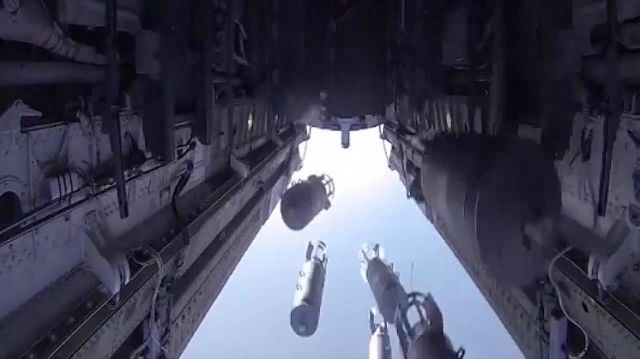 |
| OFAB-250-270 aerial bombs. |
| Source: © Department of Press Service and Information of the Ministry of Defense of the Russian Federation/TASS |
"During the attack, the crews observed a direct hit to the battleship Schlesien by one FAB-1000 and four FAB-250. Several large and small fires appeared on it, it plunged into the water and sat in shallow water on an even keel, which was confirmed by several photographs. In addition, the sinking of a transport with a displacement of 8 thousand tons, a direct hit of bombs into a destroyer squadron, a minesweeper, a patrol ship was noted," the aviation colonel wrote in his memoirs.
In the post-war period in the Soviet Union, by order of the People's Commissariat of Ammunition, three-ton fabs began to be produced, half of the weight of which is explosives. Such bombs leave huge craters with a depth of 20 and a diameter of 80 m.
A real tsar bomb can be called a nine-ton FAB (FAB-9000M-54) that appeared during the Cold War, nicknamed "elephant" for its gigantic size. The baptism of fire of the FAB-9000, packed with more than 4 tons of explosives, took place in Afghanistan, where it was possible to bring down entire gorges with its help.
Today, the most massive of the Russian high-explosive aviation bombs is considered to be the FAB-500.
Adjustable retaliation
FAB is commonly referred to as free-falling aircraft bombs. To use them, the pilot must approach the object of destruction at the closest possible distance, which involves a certain risk for both the pilot and the combat vehicle.
In order for Soviet pilots to be able to hit targets without entering the enemy's anti-aircraft missile systems, in the 1970s the development of new adjustable aerial bombs (KAB) began. Soon, the KAB-500L, equipped with a laser homing head, entered service with front-line aviation. To hit a target, the aircraft highlights it with a laser beam, and then the pilot resets.
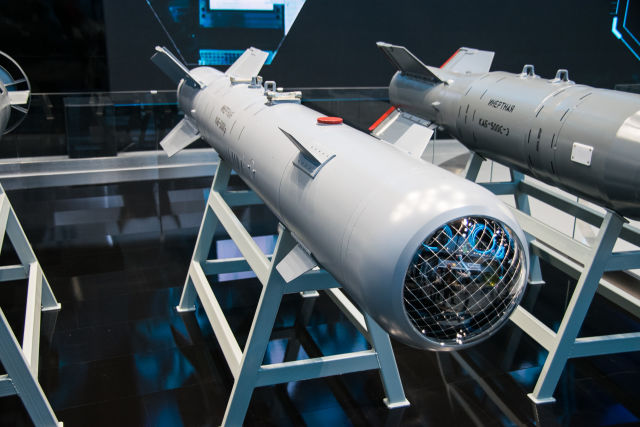 |
| Adjustable aircraft bomb KAB-500Kr (c) bmpd. |
| Source: bmpd.livejournal.com |
Next, the KAB-500Kr with a television control channel was developed and put into serial production. This aerial bomb is intended, among other things, for disguised purposes. It can be used singly and in a volley at several targets from the horizontal position of the aircraft, diving or cabrioning (flying with a climb and a nose raised above the horizon). In addition, the KAB-500Kr is able to remember the location of the target and adjust the flight until the moment of defeat, which corresponds to the principle of "shot-forgot".
Another adjustable aerial bomb in the arsenal of the Russian Aerospace Forces — KAB-1500 L-Pr — is designed to destroy high-strength and buried in the ground nuclear ammunition depots, command posts, as well as various small-sized targets with reinforced concrete walls up to 3 m thick.
Among other things, ammunition of this type can be equipped with a propulsion system to achieve a longer planning range.
The first combat use of corrected aerial bombs by the Russian Aerospace Forces took place in Syria in 2015. In the first month of the operation alone, pilots on Su-34 fighter-bombers destroyed more than 200 militants and several field headquarters with terrorist commanders.
According to the Honored military pilot, Major General of Aviation Vladimir Popov, the corrected aerial bombs are ideal for hitting critical infrastructure as part of a special military operation in Ukraine. "If we are talking about disabling a power plant, then in this case we are not talking about destroying the entire facility as a whole. It's not necessary. The goal is to disable it, and for this you need to get exactly into the building where the transformers responsible for the operation of the station are located. High—precision KAB can do this work as efficiently as possible," the military expert notes.
Also, according to Popov, KABS are indispensable for the destruction of communication nodes and enemy command posts. "I will give such an example: in the spring of last year, generals and colonels of the Armed Forces of Ukraine gathered in Zaporozhye for a meeting and our aviation covered them there. Thus, a high-precision KAB strike disabled the most important command post for several weeks. The use of such weapons increases the level of combat effectiveness of the aircraft as a means of destruction by at least an order of magnitude," concludes the honored military pilot.
In the future, as previously reported by TASS, the Russian Aerospace Forces should receive the latest guided planning aerial bombs (UPAB), which will significantly increase the range of ammunition use. They can be dropped from a height of up to 15 km and hit targets at a distance of 50 km.
Drill through the enemy's defenses
The newest planning aviation bomb "Drill" with a planning range of 30 km, created by the Russian NGO "Basalt", is designed to destroy armored vehicles, radar stations and enemy air defense systems. Satellite navigation systems are used to guide it. It is also planned to equip Russian multi-purpose fighters of the fifth generation Su-57 with the Drill.
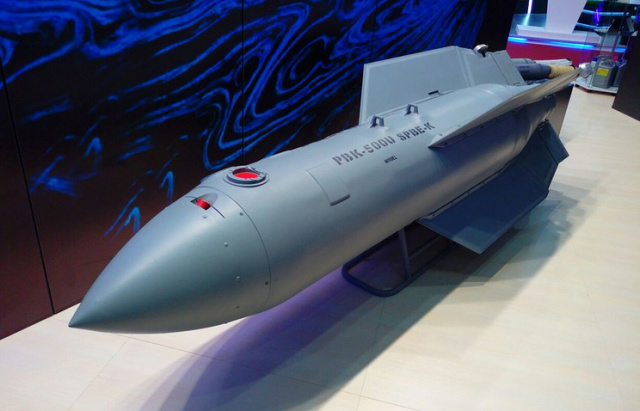 |
| Mock-up of the Drill aerial bomb. |
| Source: army-news.org |
As previously reported by TASS, the planning high-precision aerial bomb can be programmed for specific targets (armored vehicles, rocket and artillery installations), which will completely exclude targeting civilian objects.
American-Ukrainian analog
Meanwhile, Ukraine continues to receive various types of weapons from its Western partners. Among other things, the APU is expecting the delivery of JDAM kits capable of turning a conventional free-falling aerial bomb into a high-precision one. According to the military observer of the Californian online publication The Drive Thomas Newdick, the guidance and control equipment of the JDAM is an aerodynamic overlay on the body of the ammunition, which after rapid modernization receives wings and GPS navigation. All this allows pilots to work in the same way as in the case of the Russian KAB, without entering the air defense zone.
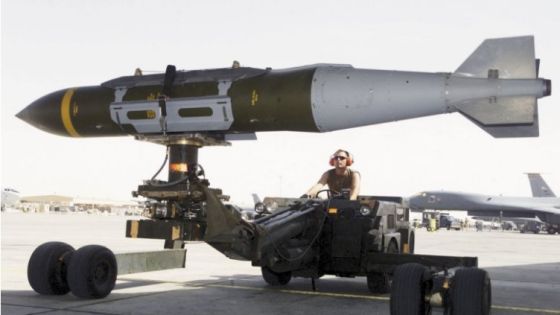 |
| UAB BLU-109/GBU-31 JDAM. |
| A source: US Air Force |
"The biggest problem will be the issue of pairing JDAM ammunition with existing combat aircraft of the Ukrainian Air Force. Potentially, MiG-29 or Su-27 fighters, Su-24 attack aircraft or even Su-25 attack aircraft can carry JDAM, but each of them will have to be thoroughly refined," the American journalist concludes.
Vasily Kuchushev
